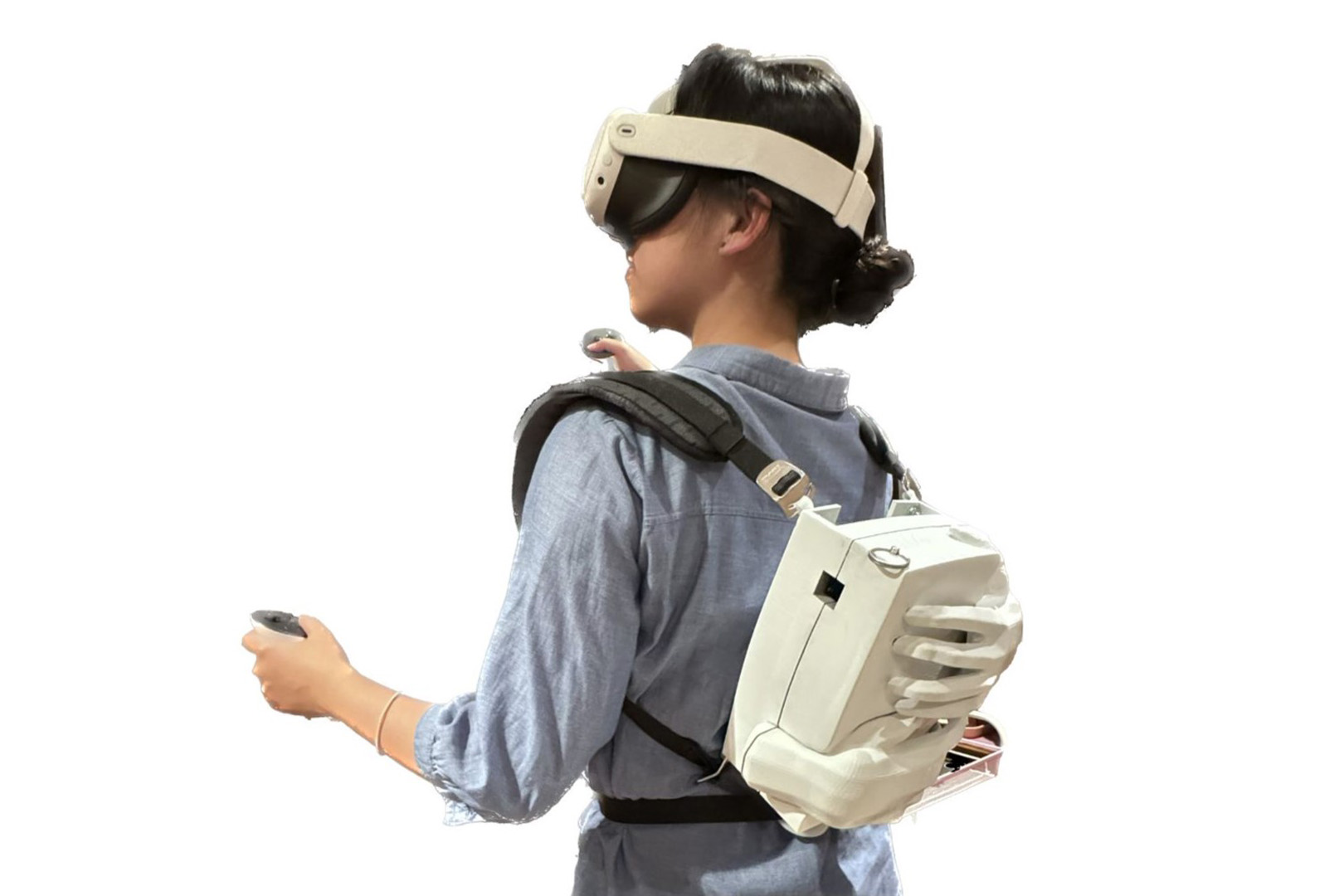“EmBelt: A Haptic Device for Extended Reality Experience to Better Understand Body Image Concerns-Related Eating Disorders” by Yi and Ko
Conference:
Experience Type(s):
Title:
- EmBelt: A Haptic Device for Extended Reality Experience to Better Understand Body Image Concerns-Related Eating Disorders
Organizer(s)/Presenter(s):
Description:
This study introduces EmBelt, an innovative haptic device integrated with VR storytelling that creates an extended reality (XR) experience designed to the enhance understanding of eating disorders (EDs) related to body image concern (BIC) among individuals without such anxieties. The system dynamically adjusts compression levels in response to user interactions, providing a portrayal of the pressures linked to the thin ideal and extending related topics. Future directions include potential platform expansion to reach a broader audience and applications in medical treatment, underscoring EmBelt?s potential as a tool for various intervention uses.
References:
[1]
American Psychiatric Association 2022. Diagnostic and statistical manual of mental disorders (5th ed.). American Psychiatric Association.
[2]
Sarah Baker, Christophe Ma?ano, Simon?A. Houle, Lindsey Nadon, Annie Aim?, and Alexandre?J.S. Morin. 2023. Profiles of body image concerns and their associations with disordered eating behaviors. Appetite 191 (2023), 1?11.
[3]
Ian Chard and Nejra van Zalk. 2022. Virtual Reality Exposure Therapy for Treating Social Anxiety: A Scoping Review of Treatment Designs and Adaptation to Stuttering. Frontiers in Digital Health 4 (2022), 842460.
[4]
Yuhan Chen, Zhuoren Zhou, Min Cao, Min Liu, Zhihao Lin, Weixin Yang, Xiao Yang, Denzel Dhaidhai, and Peng Xiong. 2022. Extended Reality (XR) and telehealth interventions for children or adolescents with autism spectrum disorder: Systematic review of qualitative and quantitative studies. Neuroscience & Biobehavioral Reviews 138 (2022), 104683.
[5]
Jake Linardon, Matthew Fuller-Tyszkiewicz, Xochitl de?la Piedad?Garcia, Mariel Messer, and Leah Brennan. 2019. Do body checking and avoidance behaviours explain variance in disordered eating beyond attitudinal measures of body image?Eating behaviors vol 32 (2019), 7?11.
[6]
Heather?L Littleton, Danny Axsom, and Cynthia L?S Pury. 2005. Development of the body image concern inventory. Behaviour Research and Therapy 43, 2 (2005), 229?241.
[7]
Ganesh?Kumar Mallaram, Pragya Sharma, Dheeraj Kattula, Swarndeep Singh, and Poojitha Pavuluru. 2023. Body image perception, eating disorder behavior, self-esteem and quality of life: a cross-sectional study among female medical students. Journal of Eating Disorders 11 (2023), 2050?2974.
[8]
Bernou Melisse, Edwin de Beurs, and Eric?F. van Furth. 2020. Eating disorders in the Arab world: a literature review. Journal of eating disorders 8(1) (2020), 59.
[9]
F Parazzini, M Marchini, L Luchini, L Tozzi, R Mezzopane, and L Fedele. 1995. Tight underpants and trousers and risk of dyspermia. International Journal of Andrology 18, 3 (1995), 137?140.
[10]
Dana?K Voelker, Justine?J Reel, and Christy Greenleaf. 2015. Weight status and body image perceptions in adolescents: current perspectives. Adolescent health, medicine and therapeutics 6 (2015), 149?58.
[11]
Karmen Wai, Philip?Douglas Thompson, and Thomas?Edmund Kimber. 2016. Fashion victim: rhabdomyolysis and bilateral peroneal and tibial neuropathies as a result of squatting in ?skinny jeans?. Journal of Neurology, Neurosurgery & Psychiatry 87, 7 (2016), 782?782.





